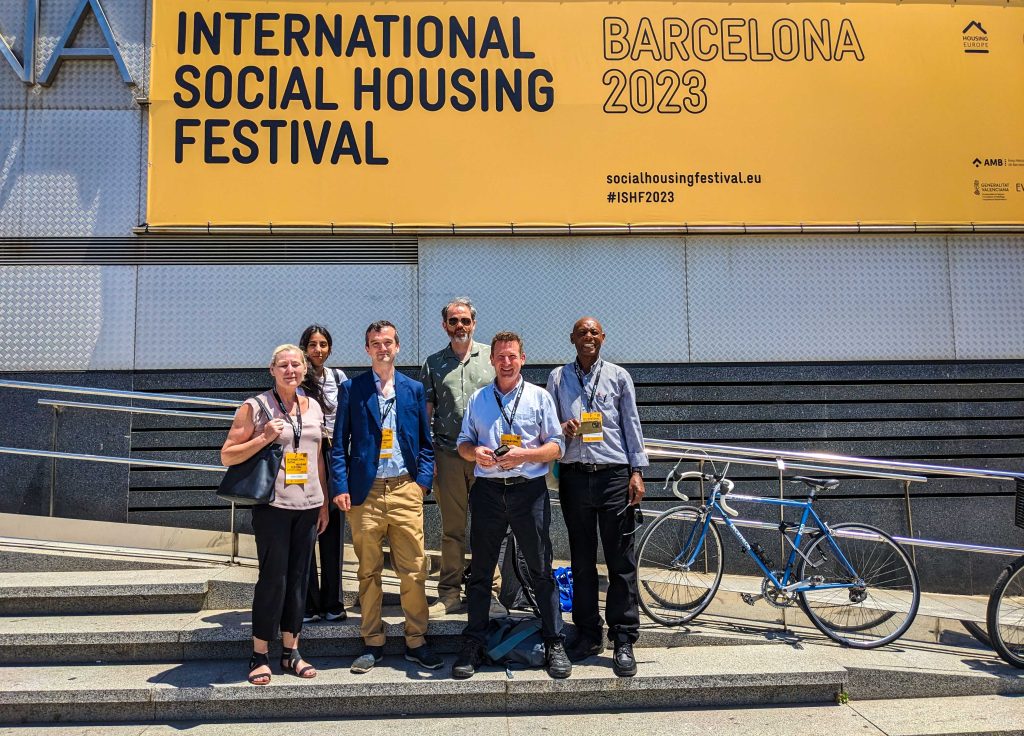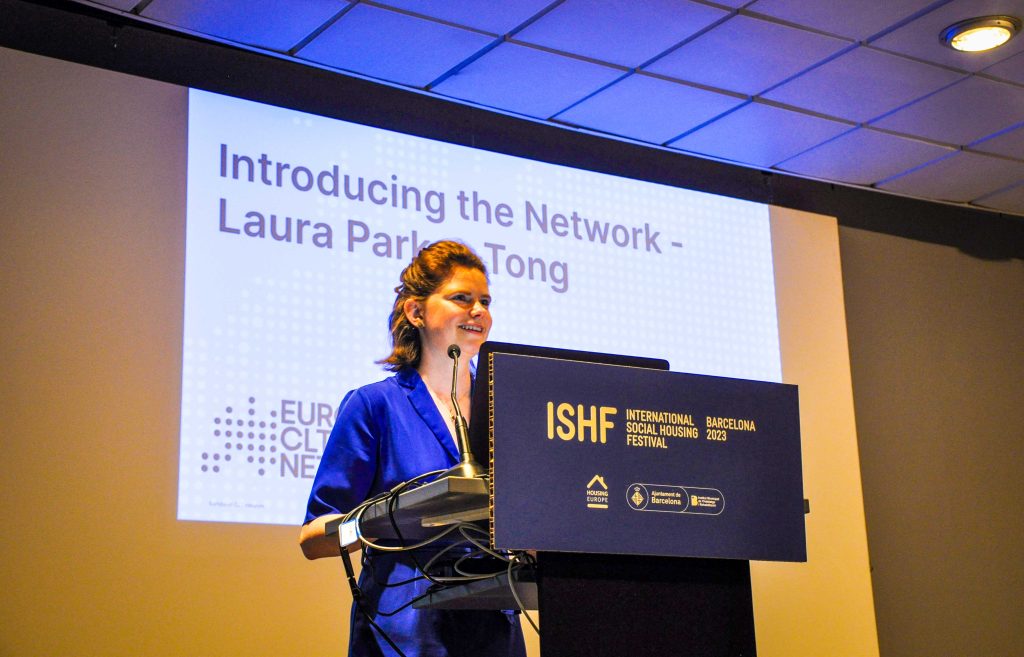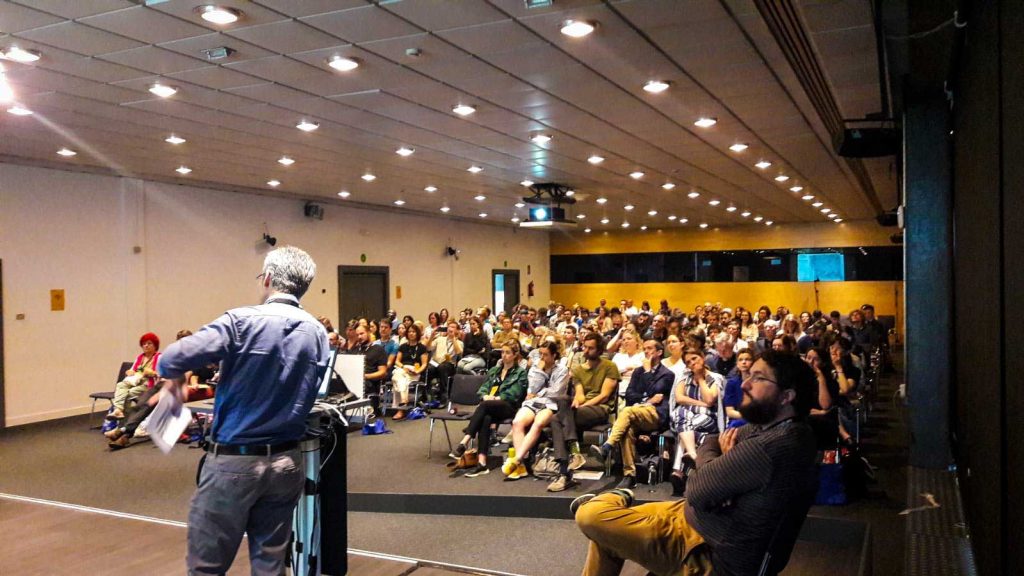Fulfilling the need for quality, affordable, future-proofed housing is one of our cities’ biggest challenges. Marginalised and low-income populations need the current system to change the most. Community Land Trusts offer an equitable and affordable alternative to traditional housing models, giving rise to their growing popularity in Europe. With the launch of a European Community Land Trust Network developed to support them, we find out what it hopes to achieve and why now is the right time to strike.
The housing sector stands at a critical juncture.
As governments move to provide enough – and adequate – housing, they do so against a backdrop of environmental concern and social crises. A brief look into these myriad challenges hint at the need for an overhaul of the housing system.
The State of Europe’s Housing
Cities are growing like never before, causing campaigners to push for national quotas to keep up with demand.
Combined with the financialisation of residential properties, this means that only investors reap the rewards of the sector’s escalating profitability, giving rise to developers producing poor quality homes – cheap to build, sold at over-the-odds prices.
Conversely, household incomes have stagnated, upending housing security for residents.
With reports of people having to choose between heating and eating, it’s clear that an inflated cost of living exacerbates the troubling housing affordability crises. As rents and house prices soar, an increasing number of Europeans are struggling to keep a roof over their heads.
And, as much as they may want this to change, occupants often have very little say over the design and running of the property they live in. Low-income renters and those in social housing especially lack agency.
These problems are a sure sign of a broken housing system.
So, if ever there was a time to create an impactful and sustainable change, it is now.
This is the mission that the recently inaugurated European Community Land Trust Network has set itself. Combining the efforts of hundreds of Community Land Trusts (CLTs) across Europe, it aims to establish them as a mainstream option for affordable, inclusive, and sustainable alternative for land use and housing.
Introducing Community Land Trusts
Almost always, the cost of our housing is tied to rising land prices, meaning that although a property doesn’t change, it goes up in price when the land value increases.
CLTs disrupt traditional ownership structures by making an important distinction between homes and the land on which they’re built. Whilst the house belongs to the resident, as we are used to, the land is collectively owned and held in trust, with a legal mechanism that ensures the land will never be returned to the market. This protects from increasing land values and ensures that homes can remain affordable generation after generation.
CLTs put communities at the heart of what they do. They engage communities throughout their development processes and control their governance. They empower communities to play an active part in their environments.
To quote the UK’s State of the Community Land Trust Sector 2023 report: “With CLTs, communities become clients for architects, not consultees; partners to developers, not opponents; campaigners with, rather than against, councils.”
We’re trying to build communities, as well as offering affordable homes.
Tom Chance, England and Wales Community Land Trust Network
Permanently Affordable Housing
CLTs reimagine the fundamental components of land and housing, making homes permanently and genuinely affordable, not just now but for every future occupier.
In Brussels, 44% of residents have an annual income below 14,700 Euros but through the CLT they have access to home ownership. London’s experience reflects this trend, with sales prices just 27% of market value in some cases! The tenure type for housing varies across Europe from rental to ownership to co-operative and is decided by the community, as the landowner.
There are proven economic advantages that serve as a convincing argument for scaling the movement. Each British pound sterling from the public purse invested in community-led housing returns £3.10 over a period of thirty years. It’s down to the knock-on benefits to health and wellbeing, lower demand for social welfare, and fairer income distribution. CLTs represent good value for money – a trend substantiated by the SOHONET network in Brussels.
Sustainable Housing for Future Generations
As permanent owners of the land, CLTs invest in sustainable housing which takes into account future generations.
The England and Wales Community Land Trust Network commissioned independent research to assess the projected energy performance of a sample of CLT projects that obtained planning permission. It tentatively concluded that community-led houses outperform national minimum and local authority standards.
Then there are examples like La Borda in Barcelona, part of the network of co-operatives who are partners of the Barcelona CLT. La Borda has won architectural prizes for its architecture – a low cost, Passivhaus design, built from timber and integrating shared spaces.
Stronger Communities
Just as telling is the impact CLTs have on creating vibrant, cohesive neighbourhoods and strengthening social ties.
Most CLT homes are part of collective housing projects. Residents live together and make decisions together. This can be a challenge, but more than that, an opportunity to contribute to resilient communities and strengthen social fabric. Residents take initiatives that improve their lives and strengthen their ties. In Brussels residents teach each other how to ride a bicycle, and bicycles are made available for those who do not yet own one. Brussels CLT also integrate spaces in their projects for activities that are open to the rest of the neighbourhood: a women’s house, a meeting room, a medical practice.
Research commissioned by the England and Wales Community Land Trust Network found that 60% of English community-led groups already – or plan to – provide non-housing amenities. These can include community gardens, civic buildings, pubs, shops, shared workspace, energy schemes, and conservation landscapes.

The Rise of European CLTs
CLTs originated in America’s Civil Rights movement and there are now around 260 in the United States as well as others in Puerto Rico and the District of Columbia.
An important accelerator for European CLTs was the four-year collaborative project Sustainable Housing for Inclusive and Cohesive Cities (SHICC). Funded by the EU Interreg programme, this saw the total number of continental CLTs leap from 33 in 2017 to more than 350 today.
Following the end of the SHICC project, Community Land Trust Brussels, together with design and implementation agencies And The People and Space&Matter, prepared a business plan for the launch of a European Network.
After securing further funding from Laudes Foundation, the European Community Land Trust Network was ready to implement – it launched early in June 2023 at the International Social Housing Festival in Barcelona, reflecting a thirst for change.

We know that to solve the housing crisis requires us to challenge dominant paradigms… We know that to make this fundamental shift, we need to make alliances, we need to show up in numbers, we need to offer a different, actionable model.
Leilani Farha, former UN Special Rapporteur on The Right to Housing and Global Director of The Shift
Demand for the European Network
CLTs are active in north-west Europe as well as Spain and over the past three years, there has been increasing interest across Scandinavia, and Southern and Eastern Europe, spanning Italy, Croatia, Sweden, Montenegro, Hungary, and Greece.
Both the UN and the EU recognise CLTs as best practice in creating affordable housing and cohesive neighbourhoods. The European Parliament Report on Housing for All encourages EU member states to get behind CLTs within their jurisdiction to promote the sharing of knowledge and solutions.
Greater Recognition for CLTs
Now, city governments too are looking at CLTs as a solution to their housing affordability issues and introducing policies that support their growth.
Paris has committed to building 20,000 new affordable homes before 2026 using the French version of CLTs. In Barcelona, the municipality – together with the social economy and cooperative sectors – are setting up a citywide CLT. Public land will be transferred to it for the development of new community-led housing options.

And it’s not just governments. CLTs are also catching the eye of private developers, who are increasingly interested in partnering up, learning from their best practices and innovation.
What’s more, financial institutions are starting to view CLTs as viable and safe funding options because of their long-term stability.
Promising to harness and build on this momentum, the time is ripe to launch the European Community Land Trust Network.
This dialogue is going to benefit us all. We want to have linkages with like-minded entities, learn from each other; we can share our own experiences as well as learn from others.
Álvaro Puertas, Barcelona CLT
The European Community Land Trust Network – In a Nutshell
This video captures the views of partnering organisations and what excites them about the launch of the Network.
As an expansive and unified voice for the 300 CLTs in Europe, the European CLT Network will act as a platform where they can:
- share their learning.
- build capacity.
- become more effective advocates.
- support the creation of new CLTs.
- expand the model into new countries.
It will work to raise awareness of the CLT model among policymakers, NGOs, and activists in the cooperative housing sphere.
The Network will connect and support existing and new CLTs, spearheading awareness and advocacy campaigns, and collaborate with development partners to drive social, design, construction, and environmental innovation within housing.
By uniting the housing sector’s innovators, the European CLT Network offers a way to transform how cities deal with housing challenges and move away from the destructive social and environmental price of business-as-usual.
But maybe most importantly of all, the European Network aims to prove, beyond doubt, that social and inclusive housing models have a legitimate place in our cities, can compete with traditional practices, and have the potential to become a cornerstone of equitable, eco-friendly, and sustainable cities.

Get Connected!
To get involved and follow further developments, follow the ECLTN on LinkedIn and Twitter, or sign up for their newsletter or visit their website.


